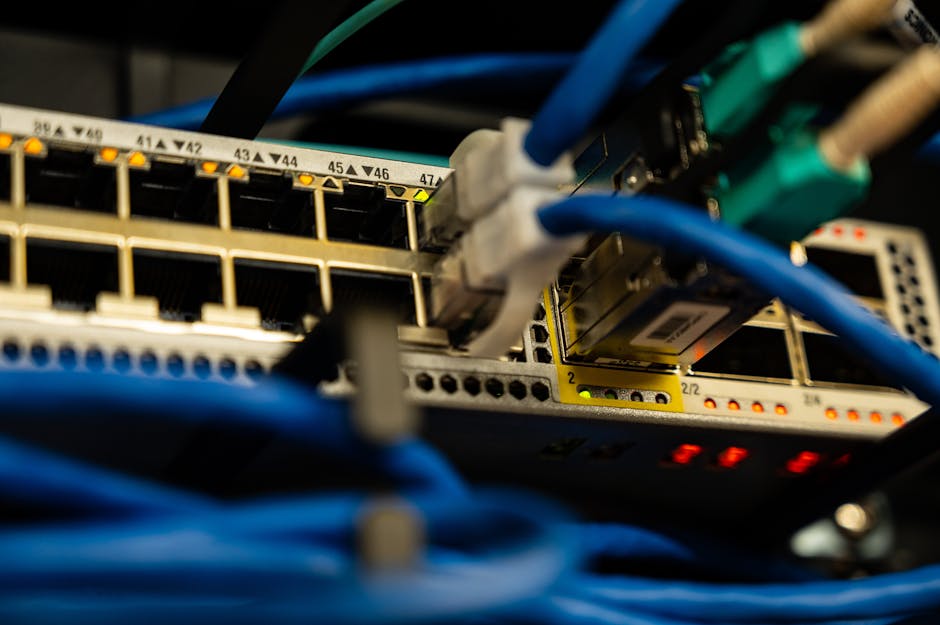As we approach 2025, the landscape of Buda IT management is rapidly evolving. Businesses are now faced with pivotal decisions that can profoundly influence their operation efficiency and security level. Within this realm, two primary models stand out: Break Fix and Managed IT services.
There are several key factors shaping the future of IT management:
- Increased reliance on technology, requiring strong IT support.
- Growing cybersecurity threats, forcing organizations to take proactive steps.
- Shift towards subscription-based service models, matching costs with business needs.
It’s important to understand these IT support models so you can make informed decisions. Choosing the right one can lead to better productivity, less downtime, and stronger security, which will ultimately help you succeed in a competitive market. IT consultants in Buda often suggest organizations appraise their specific needs against the provisions of each model to certify future-readiness.
Understanding Break/Fix and Managed IT Services Models
Break/Fix Model
The Break/Fix model operates on a reactive support basis, providing services only when an issue arises. This approach is characterized by:
- On-demand support: Clients request assistance when problems occur.
- Fee-for-service structure: Costs are incurred based on the time and materials needed to resolve each incident.
This model appeals to businesses with limited IT needs or budgets. However, it often leads to unpredictable expenses and prolonged downtimes as clients wait for issues to be addressed.
Managed IT Services
In contrast, Managed Services emphasize proactive management and continuous support. Key features include:
- Proactive monitoring: Ongoing oversight of systems to identify potential issues before they escalate.
- Maintenance: Regular updates and repairs to ensure optimal performance.
- Comprehensive security solutions: Implementation of advanced measures to protect sensitive data.
Managed services provide a structured approach that avoids the pitfalls of reactive support. Clients benefit from predictable monthly costs while receiving consistent attention to their IT infrastructure.
Importance of Service Level Agreements (SLAs)
Service Level Agreements (SLAs) play a crucial role in managed IT services. These contracts outline the expectations between service providers and clients, detailing:
- Response times for issues
- Uptime guarantees
- Performance benchmarks
SLAs enhance accountability and reliability in service delivery. Clients can trust they will receive timely support tailored to their specific needs, fostering stronger relationships with service providers. This structured framework ensures businesses remain focused on their core activities while their IT infrastructure is expertly managed.
Comparing Break/Fix vs. Managed IT Services
When evaluating break/fix vs managed IT services, distinct advantages and limitations emerge.
Advantages of Managed Services
- Predictable Costs: Managed IT services operate on a subscription model, resulting in fixed monthly fees. This predictability aids in budgeting and financial planning.
- Operational Efficiency: Proactive monitoring and maintenance minimize downtime. Issues are identified and resolved before they escalate, ensuring smoother operations.
Limitations of the Break/Fix Model
- Unpredictable Expenses: With break/fix support, costs fluctuate based on incidents. Businesses may face unexpected bills during peak incidents, creating financial strain.
- Increased Downtime: Reactive responses often lead to longer resolution times. Downtime impacts productivity and can damage reputation, leading to lost revenue.
In the ongoing comparison of break/fix and managed IT services, the proactive nature of managed services stands out as a key differentiator. This strategic shift not only enhances operational stability but also aligns IT management with long-term business goals.
Benefits and Challenges of Transitioning to Managed Services for Businesses and Providers
Transitioning to a managed services model brings several key advantages for both businesses and service providers. Understanding these benefits is crucial for organizations considering this shift.
Benefits of the Managed Services Model
- Improved Operational Efficiency: Proactive management leads to fewer system outages and reduced downtime. Continuous monitoring allows for timely interventions before issues escalate, enhancing overall productivity.
- Predictable Revenue Streams: Subscription-based pricing models provide IT service providers with predictable revenue. This stability facilitates better financial planning and resource allocation, allowing providers to invest in tools and talent that improve their service offerings.
- Strengthened Client Relationships: Consistent support fosters trust between managed service providers (MSPs) and their clients. With reduced response times due to proactive maintenance, clients experience fewer disruptions, leading to higher satisfaction levels.
Challenges in Transitioning
Despite these advantages, challenges do exist.
- Alignment of Goals: The break/fix approach often results in misaligned goals between clients and providers. Clients may prioritize immediate fixes, while MSPs focus on long-term solutions. This disconnect can create tension in the client-provider relationship, underscoring the importance of clear communication during the transition.
A Step-by-Step Guide to Transitioning from Break/Fix to Managed Services
Transitioning from a break/fix model to managed services requires careful planning and execution. To facilitate this process, businesses can follow a detailed checklist:
1.Assess Current IT Needs
- Evaluate existing IT infrastructure.
- Identify pain points and areas needing improvement.
2. Define Objectives
- Establish clear goals for the transition.
- Consider desired outcomes such as cost reduction and increased uptime.
3. Research Managed Service Providers (MSPs)
- Look for providers with a solid reputation and proven expertise.
- Compare service offerings, pricing structures, and SLAs.
4. Create a Budget
- Estimate costs associated with transitioning to managed services.
- Factor in both initial investment and ongoing monthly expenses.
5. Develop a Transition Plan
- Outline steps for implementation, including timelines and responsibilities.
- Ensure minimal disruption to business operations during the shift.
6. Train Internal Staff
- Provide training on new systems and processes.
- Educate staff on the benefits of managed services.
7. Monitor and Evaluate Performance
- Set metrics for success post-transition.
- Regularly review service performance against established goals.
Utilizing this transition to managed services checklist can streamline the process, ensuring that businesses achieve their IT management objectives effectively while minimizing risks associated with change.
Future Trends in IT Management Practices by 2025
The future of IT management in 2025 will be characterized by several key trends that will reshape how businesses approach technology.
1. Increased Demand for Cybersecurity
With data breaches becoming more sophisticated, organizations will prioritize robust cybersecurity measures within managed services.
2. Integration of AI and Automation
Proactive IT management will leverage artificial intelligence to automate routine tasks, enhancing efficiency.
3. Focus on Compliance
Regulatory requirements will drive the need for compliance-focused solutions, ensuring businesses align with standards like NIST and HIPAA.
4. Cloud-Centric Strategies
As remote work continues, cloud-based services will dominate, providing flexibility and scalability.
These trends indicate a significant shift towards a more secure, efficient, and compliant IT.
Making an Informed Choice Between Break/Fix and Managed Services Models
Deciding on the ideal IT support model is essential for business prosperity. Making the choice between a break/fix model and managed service provider in Buda requires thoughtful consideration of your needs and objectives. Here are a few factors to keep in mind:
- Business Size and Complexity: Smaller businesses with simple IT needs may find the break/fix model sufficient. Larger or more complex operations could benefit from the proactive nature of managed services.
- Cost Predictability: Managed services offer fixed monthly fees, which can help with budgeting and financial planning. The break/fix approach may lead to unpredictable expenses, putting a strain on resources.
- Operational Efficiency: Proactive monitoring in managed services improves efficiency and reduces downtime. The reactive nature of break/fix can result in longer downtimes during critical failures.
- Security Needs: With increasing cyber threats, strong security measures are necessary. Managed services provide continuous monitoring and maintenance to protect sensitive data.
By weighing these factors, you can make an informed selection between break/fix and managed services. This decision will considerably influence your operational efficiency, cost management and potential for long-term business growth.
Frequently Asked Questions About IT Management
What is the difference between Break/Fix and Managed IT services?
The Break/Fix model is a reactive support approach where businesses pay for IT services on an incident basis, while Managed IT services involve proactive monitoring and maintenance under a subscription model, offering predictable costs and ongoing support.
What are the core features of Managed IT services?
Core features of Managed IT services include proactive monitoring, regular maintenance, and the establishment of Service Level Agreements (SLAs) to ensure reliable and consistent support for businesses.
What are the advantages of transitioning to Managed Services?
Transitioning to Managed Services can lead to improved operational efficiency through proactive management, predictable revenue streams for service providers, strengthened client relationships due to consistent support, and reduced response times.
What challenges might businesses face when moving from Break/Fix to Managed Services?
Challenges may include overcoming resistance to change, aligning goals between clients and providers, and ensuring that the new managed services model meets specific business needs effectively.
What should businesses consider when choosing between Break/Fix and Managed Services?
Businesses should carefully evaluate their specific needs, including budget considerations, desired level of support, potential downtime impacts, and long-term IT strategy before selecting an IT support model.
What future trends are expected in IT management practices by 2025?
By 2025, emerging trends in IT management practices are likely to include an increasing demand for enhanced cybersecurity measures within managed services, as well as greater reliance on data analytics for decision-making.








